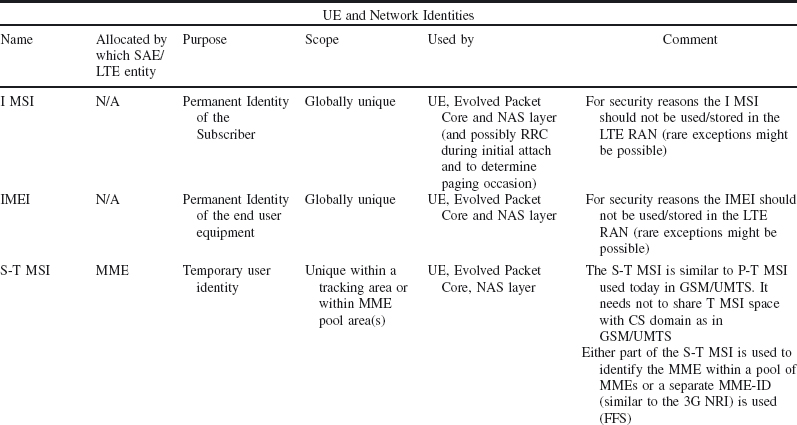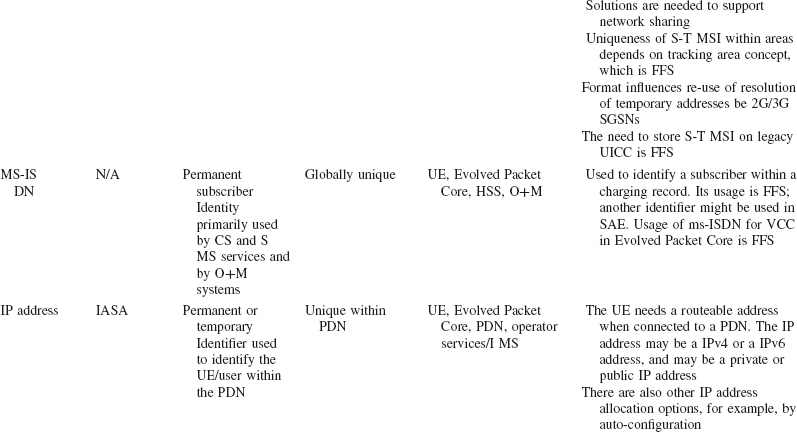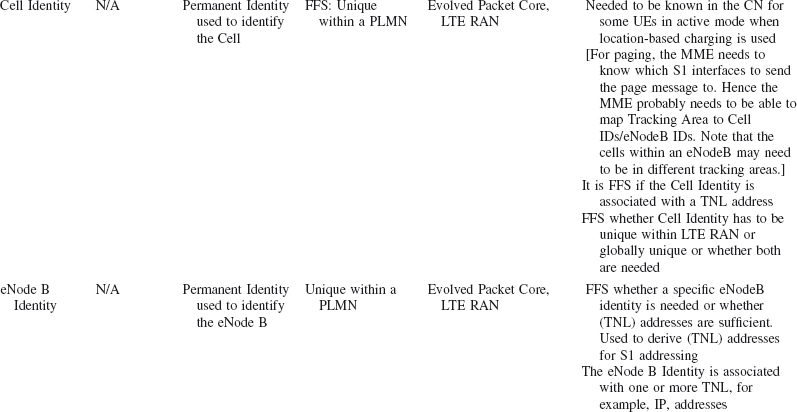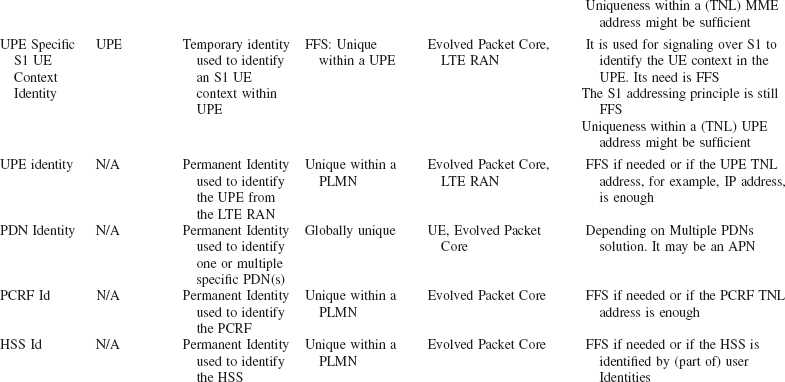LTE Identification, Naming and Addressing
LTE provides detailed identification and naming values for various entities, that is, users MSs, eNBs, service areas, etc. In the following, we briefly summarize these LTE functionalities.
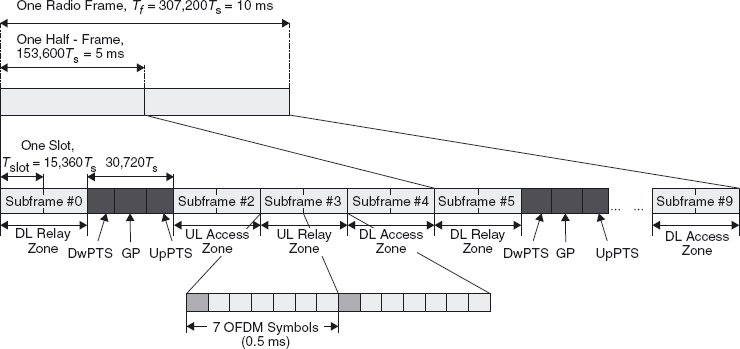
Figure 10.4 TDD-LTE-Relay frame structure: change to make it similar to the single hop relay structure forma. Reproduced by permission of © 2010 3GPP. Further use is strictly prohibited.
Figure 10.5 UE unique identification request and response. Reproduced by permission of © 2010 3GPP. Further use is strictly prohibited.
Identification
Identification of Mobile Subscribers
To identify mobile subscribers, LTE assigns a unique identification called the International Mobile Subscriber Identity (IMSI). The Mobility Management Entity (MME) assigns a Temporary Mobile Subscriber Identity (TMSI) to each visiting mobile subscriber in order to maintain the subscriber's confidentiality. A TMSI assigned during the network access is called the Globally Unique Temporary Identity (GUTI). The home MME correlates the allocated TMSI with the IMSI allocated to the mobile subscriber. If the GUTI is not available to provide unique identification, the serving MME requests the IMSI of the UE using a non-access-straturm procedure. This procedure is shown in Figure 10.5.
Identification of a Cell
A cell in LTE is identified by a Cell Identifier (CI) of a fixed length of 2 bytes. To generate the Cell Global Identification (CGI), the CI is concatenated with location area identification. The cell identity is unique within a location area.
Identification of Mobile Station Equipment
A mobile station equipment is uniquely and internationally identified by the fourteen decimal digits long International Mobile Station Equipment Identifier (IMEI). This identifier consists of three elements: the eight decimal digits Type Allocation Code (TAC), the six decimal digits serial number, which uniquely identifies each equipment within the TAC, and the Spare digit, which is normally set to zero when the IMEI is transmitted by the MS. Whenever the GUTI is not available, the serving MME may request the IMEI from the MS using the aforementioned procedure for requesting the IMSI.
Identification of PLMN, RNC and CN Domain
To ensure backward compatibility, LTE supports identification of RNC, CN Domain and PLMN. A PLMN is uniquely identified by its PLMN identifier (PLMN-Id) which consists of Mobile Country Code (MCC) and Mobile Network Code (MNC). The MCC and MNC are predefined within a UTRAN while the RNC and the CN identifiers are allocated by the operator. Together, the PLMN-Id and the RNC-Id globally identify an RNC. Similarly, the CN-Id he PLMN-Id globally identify a CN node.
Addressing
IP Addressing
When an MS accesses a network, it can be assigned an IP address during the default bearer establishment, which in turn is maintained as long as the MS is associated with the Packet Data Network (PDN). An MS therefore retains an always-on IP connectivity with that PDN. LTE facilitates a single MS to simultaneously have multiple PDN connections. An MS will therefore establish a default bearer with each PDN, and be assigned an IP address that identifies the MS with that PDN. This facilities maintaining complete logical separation of data across the multiple networks with which the MS has simultaneous IP connectivity.
LTE provides full support for both IPv4 and IPv6 addressing. An MS can obtain an IP address as part of the MS attachment procedure (in case of default bearer establishment with IP assignment) or the IP address assignment can be obtained via DHCP or IPv6 address autoconfiguration procedure (in case of default bearer establishment without IP assignment).
MAC Addressing
Access Point Name (APN)
The APN is used as a reference to the GGSN in the GPRS backbone. The APN is translated into the IP address of the GGSN by the internal GPRS DNS to support inter-PLMN roaming. The APN is composed of two parts, the mandatory APN Network Identifier and the optional APN Operator Identifier. The APN Network Identifier defines the external network to which the GGSN is connected, while the APN Operator Identifier defines the PLMN GPRS backbone to which the GGSN is located.
HeNB Name
HeNB Name is a broadcast string of text format, which is human readable name for the Home eNB identity. The maximum length of HeNB Name is 48 bytes.
Table 10.2 provides summary of some of the identifications and naming used in LTE. For more information the reader is advised to consult 3GPP TS 23.003 document.
Table 10.2 Summary of identifications and naming used in LTE. Reproduced by permission of © 2008 3GPP. Further use is strictly prohibited


